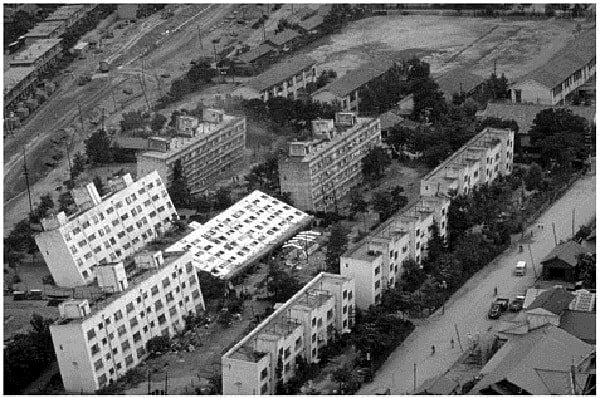Foundations of the building are just like legs of the human body. If the legs are not strong enough to work, then the human body fails to perform well. Similarly when the foundations of any building are not strong enough, they also fail to perform well and building collapse due to the foundation failures. There are many reasons which cause the failure of foundation and may ultimately lead to partial or total building collapse.

Courtesy - The National Academies Press
Also Read:
Foundation System: All the Basic Things You Need to Know
7 Important Requirements that the Foundation System should Meet
10 Important Criteria to Choose the Right Foundation for Your House
Reasons for the Failure of Foundation which may Cause Building Collapse:
01. Resting Foundations on Poor Soil or at Inadequate Depth:
The foundation may fail due to failure in shear i.e. due to excess load, due to sliding or due to overloading. Hence they need to be placed at a minimum depth.
Foundations resting on poor soil or at low depth results in the movement of the building as the soil settles eventually. This movement of the building causes uniform (same settlement of entire building) or differential settlement (relative movement between two parts/two column of a building) of the building. Both the uniform or differential type of settlement in the building can cause the failure of the foundation, and hence it becomes the reason for the partial or total collapse of the building.
The causes of uniform or differential settlement in building depend on following circumstances:
- No uniformity in subsoil formation within the area covered by the building due to the change in type, structure, thickness and density of the soil formation.
- Nonuniform pressure distribution on the building due to the uneven service load/sustained load consisting of dead loads and live load of the building which gives rise to stress and deformation in the soil below foundation causing its settlement. However ununiform settlement is more dangerous.
- Lowering and raising in ground water level in the loose granular soil during and after the construction. This is very critical. It is always advisible to rest foundation in either wet or dry soil, but not at a place where it becomes intermediary dry or wet.
- Uneven expansion and contraction of soil due to moisture migration, uneven drying and wetting, etc.
- Ground movement such as soil erosion, creep or landslide, etc.
- Settlement due to adjacent excavation, mining subsidence and underground erosion.
The effects of uniform or differential settlement of the building either as a whole or parts of it are causing tilt, rotation or angular distortion/relative rotation which may ultimately cause the failure of foundation and building may collapse partially or totally.
Also Read:
What are the Different Types of Raft Foundation?
What are Combined Footings?
Necessity of Pile Foundation!
02. Resting Foundation on the Reclaimed Soil:
Resting foundation of the building on reclaimed soil (new landfills from the sea or wet soil of riverbeds or lake beds, even debris etc.) becomes another reason for building collapse. Reclaimed soil contains clay and silt particles, which may cause excessive consolidation settlement over the time and the strata become unstable for the building. The reclaimed soil has also not undergone consolidation over a period of time. The reclaimed soil or landfills from the sea also contain harmful chemical like sulphur, chloride, etc. which also affect the foundation of the building. Hence resting foundation on reclaimed soil without investigation may be the cause for building collapse. Never rest foundation on reclaimed soil.
03. Proper Soil Investigation not Done:
Investigations of soil are always carried out on the site before commencement of design to check the characteristic of the soil at the particular location. Any mistake while taking the soil sample or examining the soil sample may result into the wrong calculation of soil bearing capacity (SBC). SBC is the capacity of the soil to withstand the loads of the building. Hence wrong calculation of SBC leads to the faulty design of the building. Hence it becomes the reason for foundation failure and building may collapse.
04. Corrosive Soil:
Many chemicals are present in the subgrade of soil. The chemicals like sulphur, chloride which are present in the soil, react with the concrete. The reaction results in the deteriorations of the concrete foundation. These may also lead to the building failure over time.
05. Soil Liquefaction during Earthquake:
Soil liquefaction is a phenomenon in which a saturated soil deposit loses its strength and stiffness due to the ground shaking which generates excess pore water pressure during the earthquake. Hence the foundations may fail during the earthquake, and it may be the reason for the partial or total collapse of the building.
06. Error in Design:
Sometimes the failure of foundation also occurs due to the errors in design like inadequate depth or sizes of the foundation, etc. or mistakes in construction like poor compaction, insufficient diameter of footing reinforcement, etc.
Also Read:
Signs of Foundation Problems in Your Houses
Causes of Foundation Cracks
In conclusion, properly designed foundation resting on well compacted soil at adequate depth increase the performance of building and reduce the risk of the building failure.